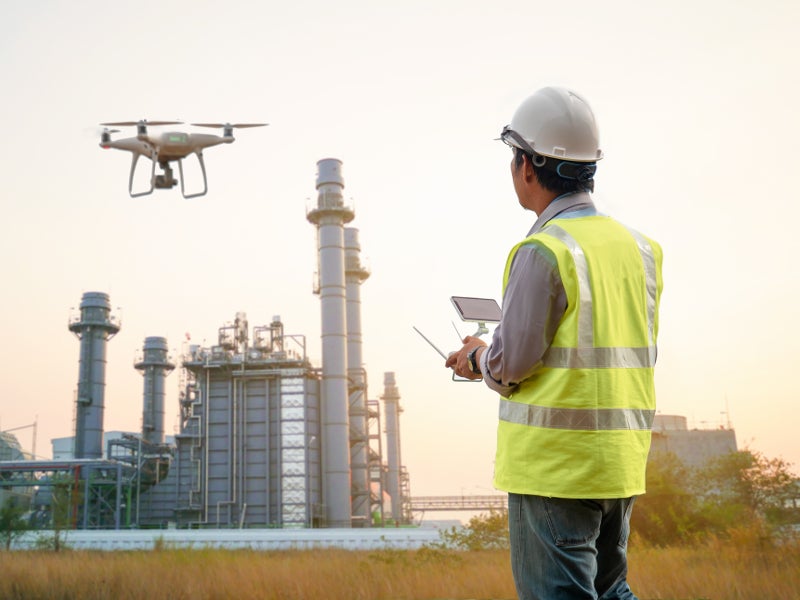The Rise of Drones Applications in Oil and Gas Industry
Latest advancements in sensing and imaging technologies are enabling drones to be deployed in a wide range of settings. They are often used in performing inspection and predictive maintenance of critical infrastructure.
Drone makers are collaborating with oil and gas companies to develop applications that can be customised. This will facilitate different types of data collection obtaining real-time insights.
Listed below are the key trends of drone applications in the oil and gas industry over the next 12 to 24 months, as identified by GlobalData.
Remote monitoring and surveillance
Drones are primarily used in the oil and gas industry for remote monitoring and surveillance. This covers infrastructure, equipment, tankers and trucks, and other assets. Drones can provide a 360-degree view for monitoring field operations. They can also observe the progress of facilities that are under construction, and provide encroachment detection. Remote monitoring using drones is also enabling oil and gas companies to inspect unmanned production platforms.
Inspection and predictive maintenance
Drones can be customised to include ultrasonic sensors and visual inspection technologies, such as cameras and thermal imagers These are used for carrying out a close-range nondestructive inspection of oil and gas assets to detect flaws or defects. This kind of approach is proving to be very efficient in the evaluation of pipelines, exterior surfaces, and sub-surfaces of storage tanks, and marine vessels. Merging drone data with advanced data analytics also allows companies to predict the current health of the equipment and project potential malfunctions.
Methane management
Oil and gas companies are targeting methane reductions from operations to lend their support to the worldwide campaign against climate change and global warming. To achieve these objectives, companies are investing in a wide range of sensing technologies. These can be either permanently installed on the target asset, or mounted on drones, for obtaining real-time data. Norway-based oil and gas company Equinor is investing in a research programme to develop laser-based sensors for detecting methane leaks.
Emergency response
Drones can provide a bird’s eye view of developments in the event of an industrial accident or a natural disaster. Real-time drone imagery and video analytics can also assist in mapping oil spills or fire incidents. This can enable companies in coordinating emergency response and directing resources to the right places while ensuring personnel safety.
Material handling
Technology companies worldwide are experimenting with the reliability of drones for delivering products in VLOS and BVLOS scenarios. This focus is mainly for consumer and healthcare applications. This use of drones could be adopted in the context of oil and gas as well, to transport payloads to production platforms located nearby. Although restriction on the size and weight of the payload may limit the usability of drones in this situation, it can certainly be considered as an option for delivering smaller objects.
This is an edited extract from the Drones in Oil & Gas – Thematic Research report produced by GlobalData Thematic Research.






